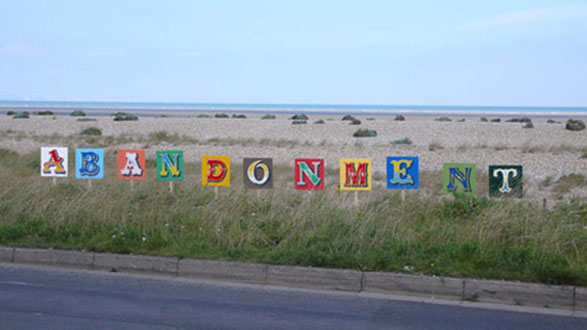About g39
A Contemporary Artspace in the heart of Cardiff
On 3 July 1998, there was a sense of anticipation in the Cardiff artscene: a new artist-run space was being launched. The inaugural exhibition preview was packed with artists, students and suits, curious about the clamour over the new project; it was met with both a sense of expectation as well as the doom-laden predictions of a short lifespan.

Fortunately g39 is still here, quietly but determinedly delivering a programme, providing a meeting place for artists and a focus for graduates. To celebrate g39 is marking its ten-year anniversary with a commemorative programme of events, starting with If You Build It, They Will Come – an attempt to present the works of each and every artist g39 has worked with in the past decade.

The phenomenon of artist-initiated projects is by no means novel and the motivations and ambitions of different spaces are as varied as their output. The idea of providing independent or new ways of working acknowledges a certain ideological belief that the self-empowering nature of artist-run spaces could be used to shape culture. A willingness to be open to change, being flexible enough to adapt and respond to dominant political or cultural trends – whether for or against – has ensured that these spaces have maintained a key position in the mechanisms of the artworld.

Across the UK the development of the studios with showing space has been a model that has been used again and again, based on a socialist principle of working collectively for the good of everyone. In the past these spaces were seen as 'alternative' and loaded with 'anti-establishment' connotations, mirroring the indie music label ethos or 'zine cultures. However, this dated version of a world with clear values drawn in black and white has been blurred. In the nineties many London artist-led projects were bankrolled by dealers and collectors who generated the self-fulfilling prophecy that they could gain kudos – and wealth – by assisting the emergence of the yBas. More recently many artist-run spaces have built themselves on more commercial models, in their structures and participation in art fairs, with certain artists taking the role of dealers and representing other artists. The boundaries between artists, curators, writers and dealers have never been so fluid.
In Wales the pressures and motives have been different; in the absence of a prominent economic driver, artist-run activity has had to address other issues. The cultural factors of national identity, of a sense of being peripheral, and of the schisms caused by both language and geographic boundaries are omnipresent; though these are countered by a willingness to engage on an international level and the interesting tension in the pull forward of the contemporary and the pull back of tradition. Since the outset of the g39 project there has been a sense that curatorial strategy could address these issues; if the space was to play a key cultural role it first had to develop a strong relationship with artists in Wales while acting as a conduit for work from elsewhere. It was essential that this understanding was at its core. This has meant that g39 has been engaged in creating a sense of cohesion, evolving in parallel but in different ways than its metropolitan counterparts.













